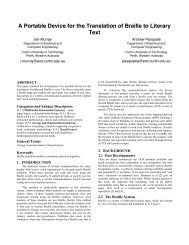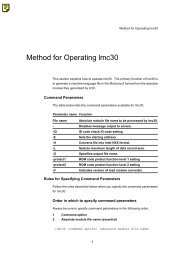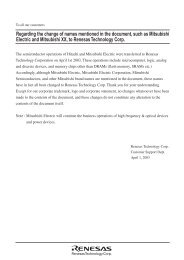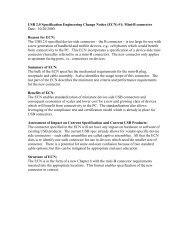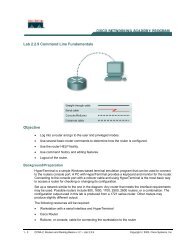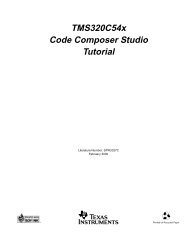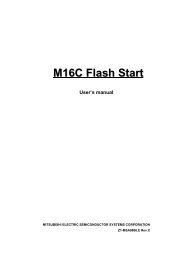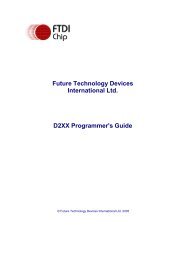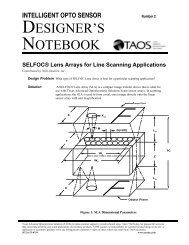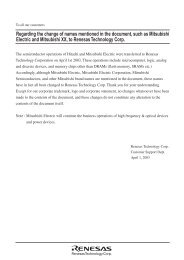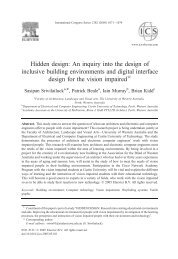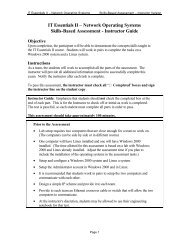"TMS320C55x DSP Library DSPLIB Programmer's Reference"
"TMS320C55x DSP Library DSPLIB Programmer's Reference"
"TMS320C55x DSP Library DSPLIB Programmer's Reference"
Create successful ePaper yourself
Turn your PDF publications into a flip-book with our unique Google optimized e-Paper software.
fir2Special Requirementsnh must be a minimum value of 3. For smaller filters, zero pad the h[] array.nx must be an even value.Coefficient array h[nh] must be located in internal memory since it is accessedusing the C55x coefficient bus, and that bus does not have accessto external memory.Implementation Notes The first element in the dbuffer array (index = 0) is the entry index for the inputhistory. It is treated as an unsigned 16-bit value by the function even thoughit has been declared as signed in C. The value of the entry index is equal tothe index – 1 of the oldest input entry in the array. The remaining elementsmake up the input history. Figure 4–16 shows the array in memory with anentry index of 2. The newest entry in the dbuffer is denoted by x(j–0), whichin this case would occupy index = 3 in the array. The next newest entry isx(j–1), and so on. It is assumed that all x() entries were placed into the arrayby the previous invocation of the function in a multiple-buffering scheme.Figure 4–16, Figure 4–17, and Figure 4–18 show the dbuffer, x, and r arraysas they appear in memory.Figure 4–16. dbuffer Array in Memory at Time joldest x( ) entrynewest x( ) entryentry index = 2x(j–2*nh2–2) x(j–2*nh2–1)x(j–2*nh2) x(j–0)x(j–1)x(j–2)•x(j–2*nh2–5x(j–2*nh2–4) )x(j–2*nh2–3)lowest memory addresshighest memory addressFunction Descriptions4-39



